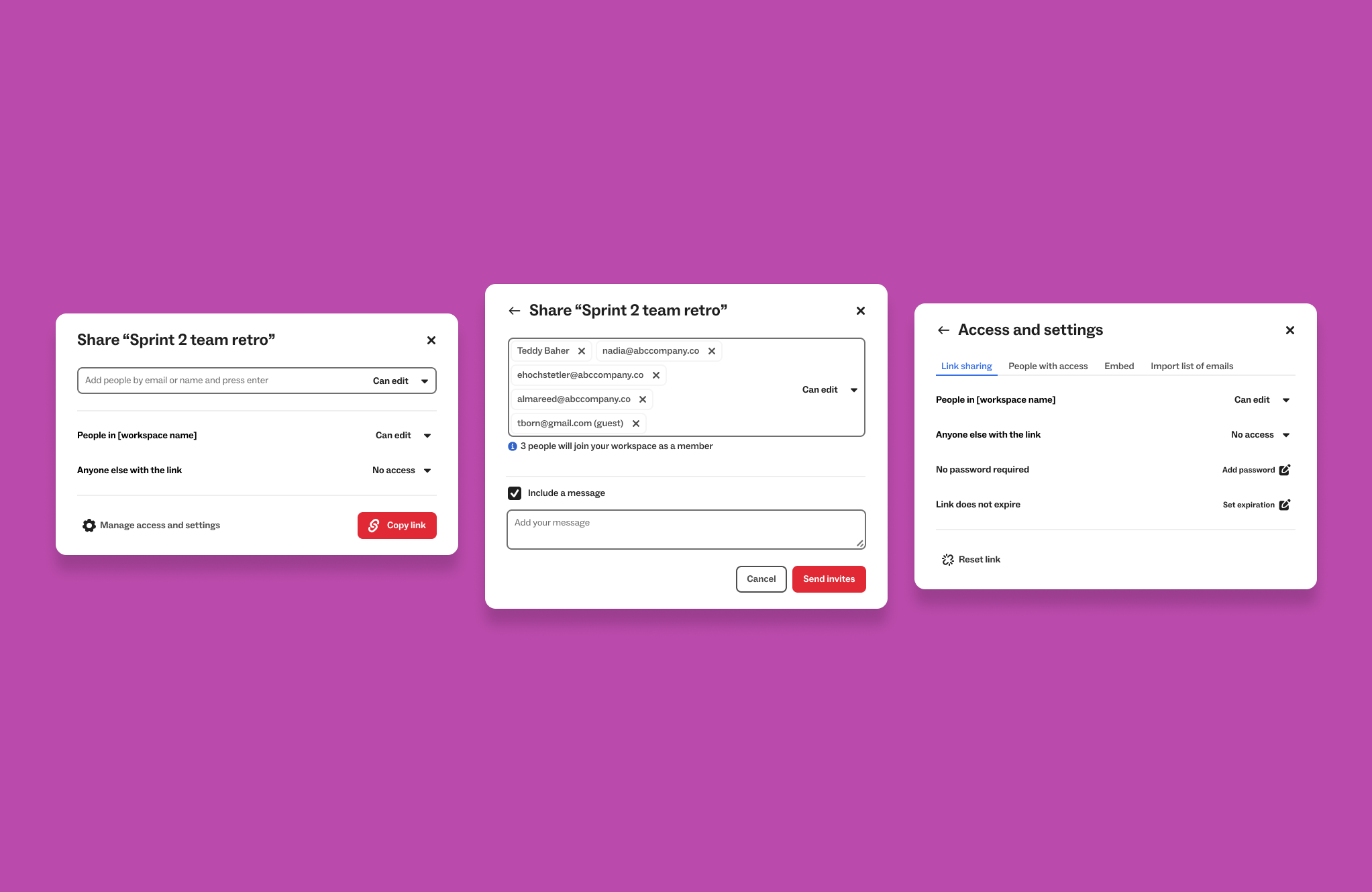
Improving the Share Experience in Mural

Improving the Share Experience in Mural
The Problem:
Sharing a mural with other collaborators is cumbersome and requires users to navigate through multiple options, leading to a frustrating experience and cognitive overload. This complexity often leaves members uncertain about who has access to their content and how to manage sharing permissions effectively. The lack of a clear and straightforward way of sharing murals hinders collaboration within teams.
Goal:
To address these issues, we need to redesign the sharing experience to make it less complex while providing users with a secure way to share their content. Our goal is to simplify sharing, improve information architecture, and foster improved team collaboration, ultimately leading to better outcomes for Mural users.
Role:
Lead Product Designer
Team:
Ramiro Castro, PM
Tiffany Sawhney, Eng Manager
Yao Xu, Staff Eng
Mati Fuentes, Senior Eng
Daniel Alanis, Senior Eng
Tyler Altes, Content Designer
Lada Gorlenko, Researcher
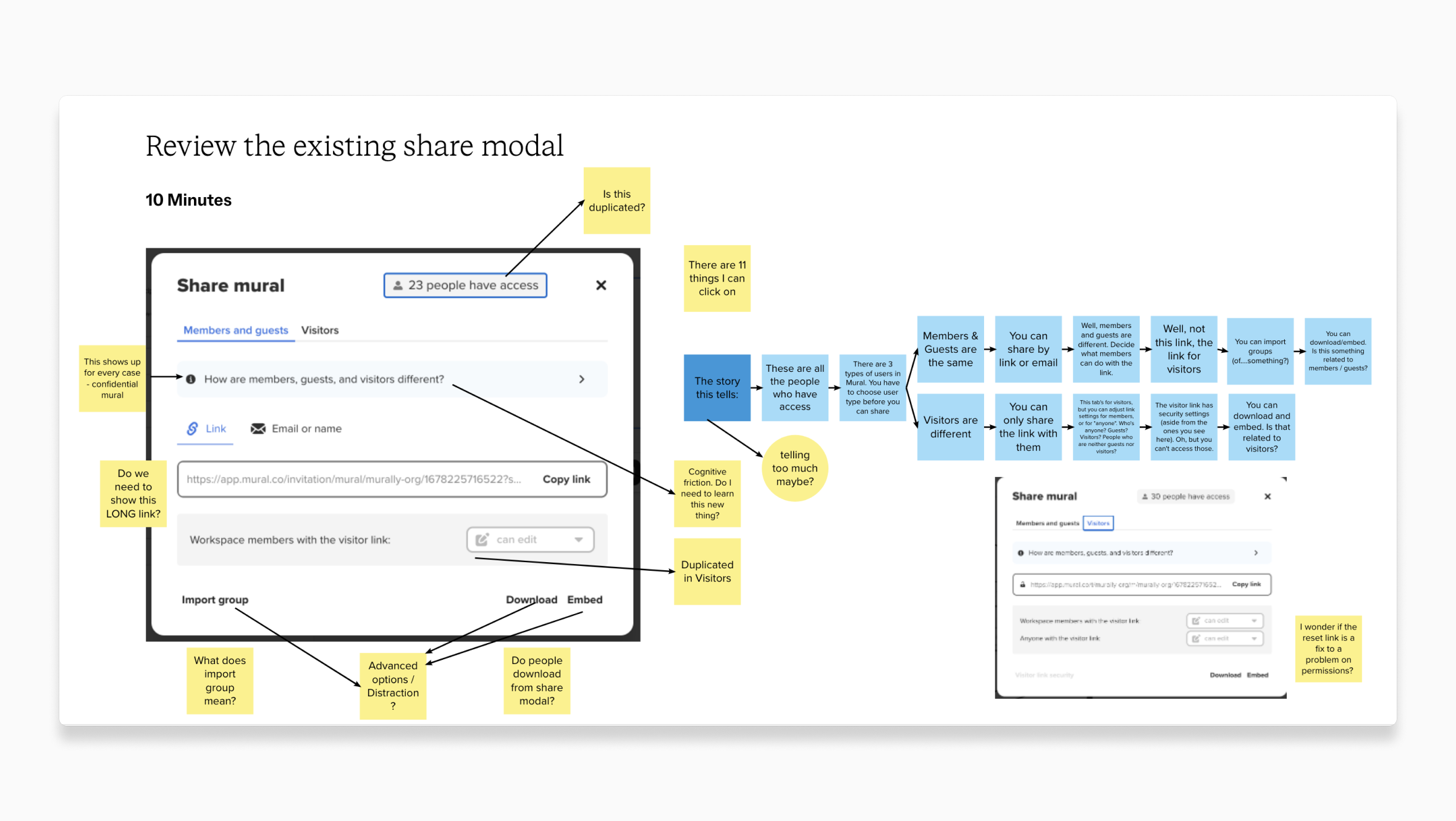
Identifying top priorities
During a two-day workshop, the Customer Journey team collaborated with the Permissions team to address this complex problem. We identified key issues, established guiding principles, reviewed the current share modal, brainstormed ideas, and prioritized the top solutions for the first release.
Themes:
Consolidate the share link from two to one
Clearly differentiate between members/guests and visitors
Define advanced settings
Guiding principles:
Empower users by clearly indicating who can see their content
Clearly communicate the outcomes of sharing actions
Minimize distractions through progressive disclosure
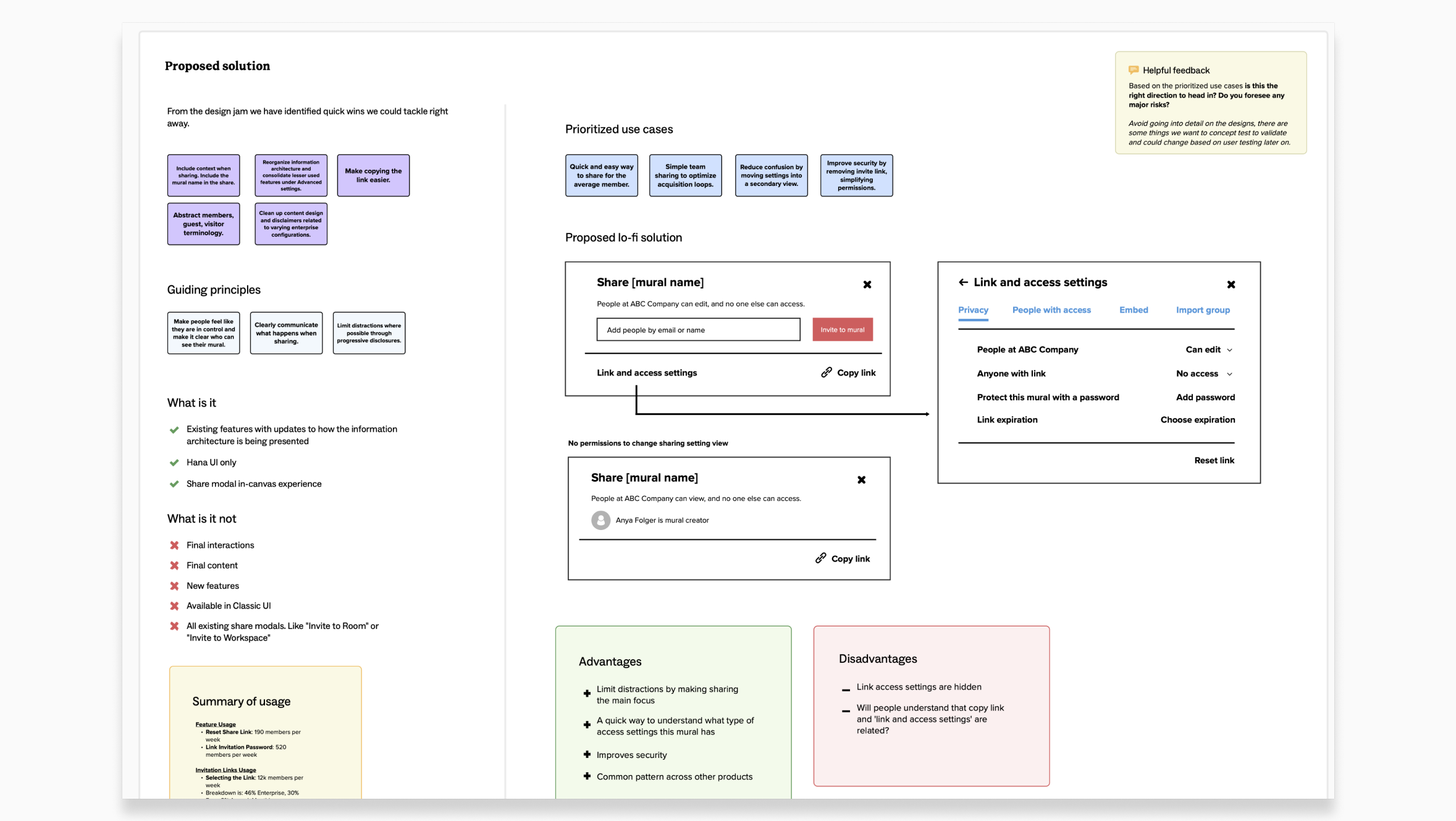
Executive review
Given the complexity and significant impact of this project on Mural users, it was crucial to ensure alignment across multiple teams and secure Executive buy-in to initiate the work. I created a low-fidelity sketch in Mural, incorporating ideas from the workshop, to present and gather initial feedback. After obtaining alignment and valuable input, the Executive Leadership Team (ELT) agreed that we should quickly ship an MVP, learn from it, and continue to build upon it.
The design process
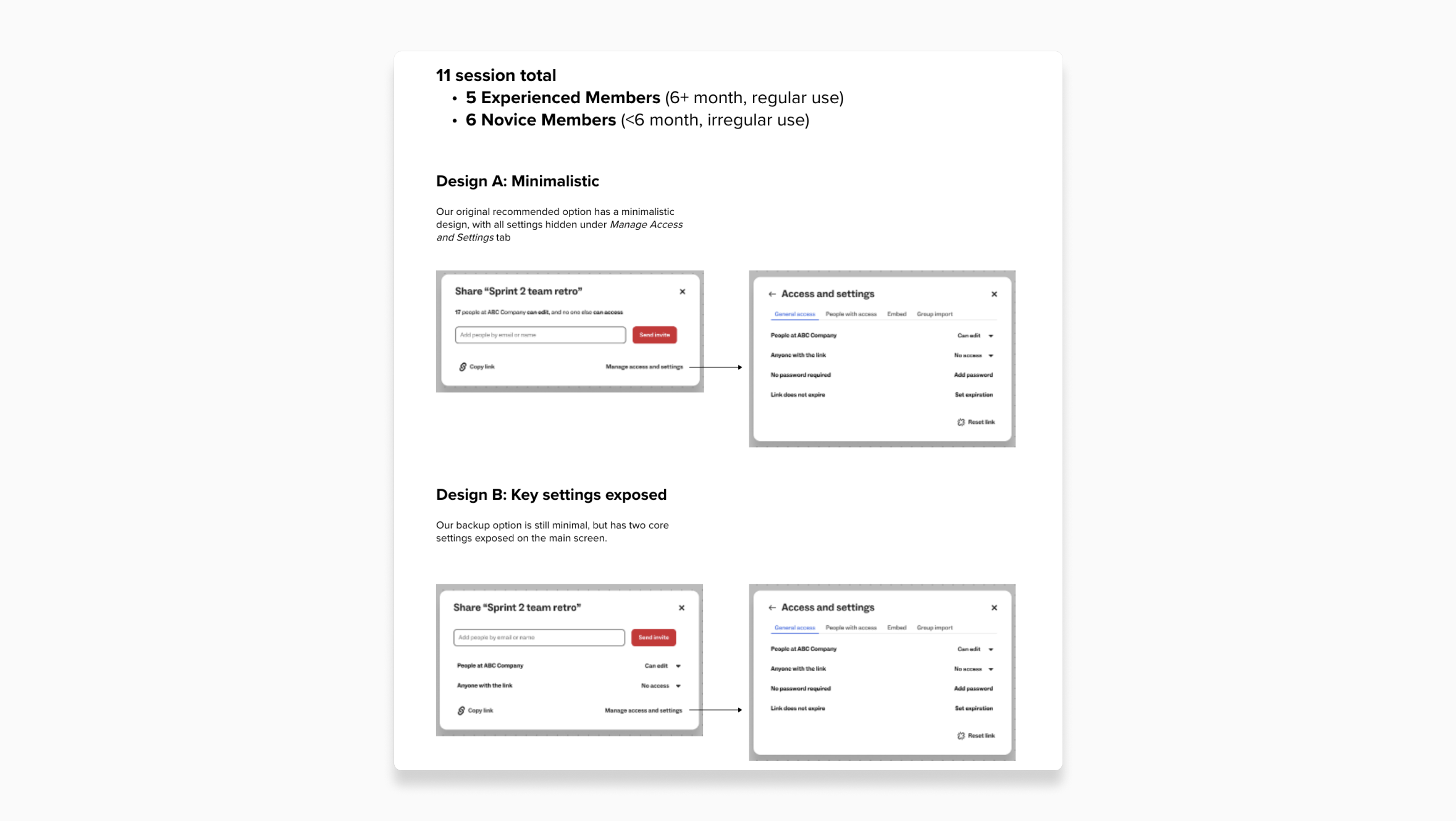
Concept testing
Our Lead Researcher organized research days at Mural, enabling us to quickly gather customer feedback on two different concepts before finalizing a design direction. We tested two different options: Option A, which hides all settings in a separate view, and Option B, which exposes key share settings.
Recommendations:
Proceed with Option B, which received great feedback and unanimous preference. It involves fewer clicks and gives users a greater sense of control and confidence.
Refine the information architecture (IA) and provide contextual help.

A glimpse into my process and how complex this project was
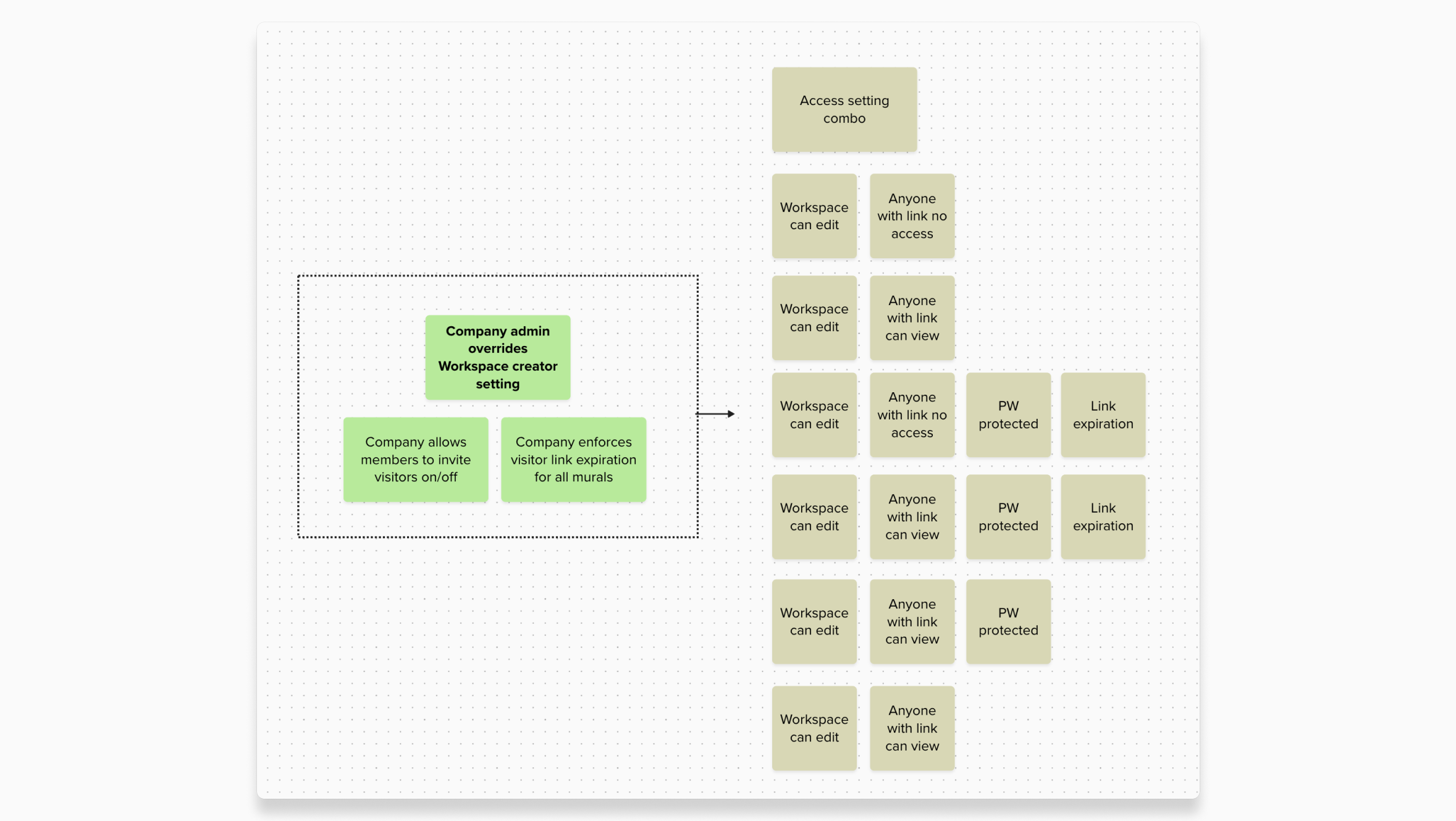
Complexities of permissions and access settings
As I explored the various flows and paths involved in the sharing process, I encountered numerous complex challenges. Simplifying the process was a primary goal, but we also faced several constraints beyond our control. For instance, updating existing permissions and access settings, which would impact at a company-wide and workspace-level, required collaboration with another team that did not prioritize this work until the last quarter of the year 2023.
For our initial release, the PM and I agreed to focus on ensuring clear communication for each sharing interaction across different permission levels, while managing the constraints we faced.
Design iterations

One example (out of many) different explorations and rounds of feedback
Share modal redesigned
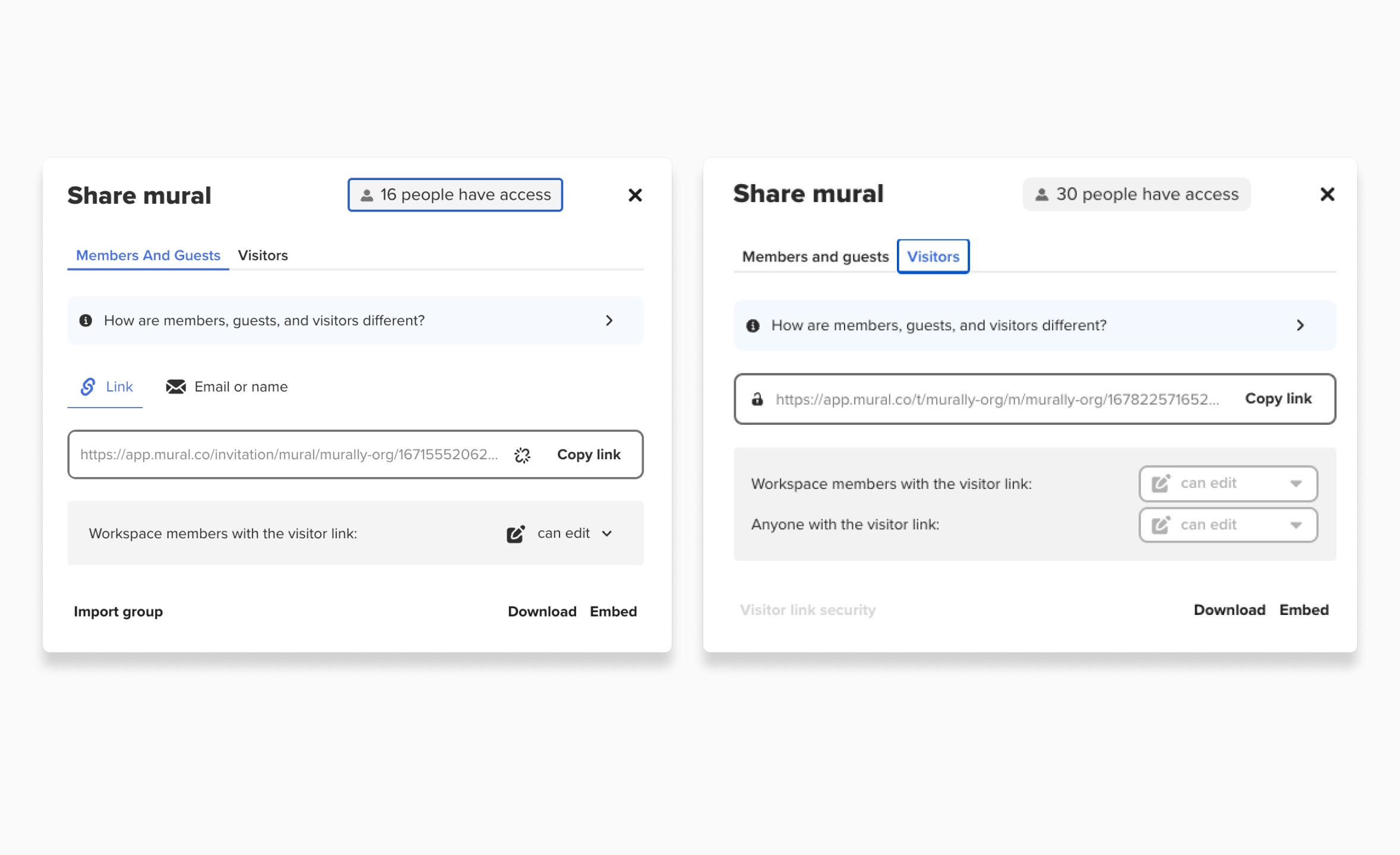
Previous designs
The previous share experience lacked a clear hierarchy, resulting in cognitive overload for users attempting to share with collaborators. The absence of a clear call-to-action made the process time-consuming and confusing, often leading users to resort to copying the browser link, hoping they had the correct sharing permissions.

A better way to share and add collaborators
Given the constraints of permission settings, content and contextual progressive disclosures played a crucial role in ensuring users understood who had access to the mural or needed access. We showcased users' frequent collaborators, making it easier to invite people they work with often. Copying the share link was made easier by removing the appearance in the long link string into a primary button, in a common place where people would look for it.
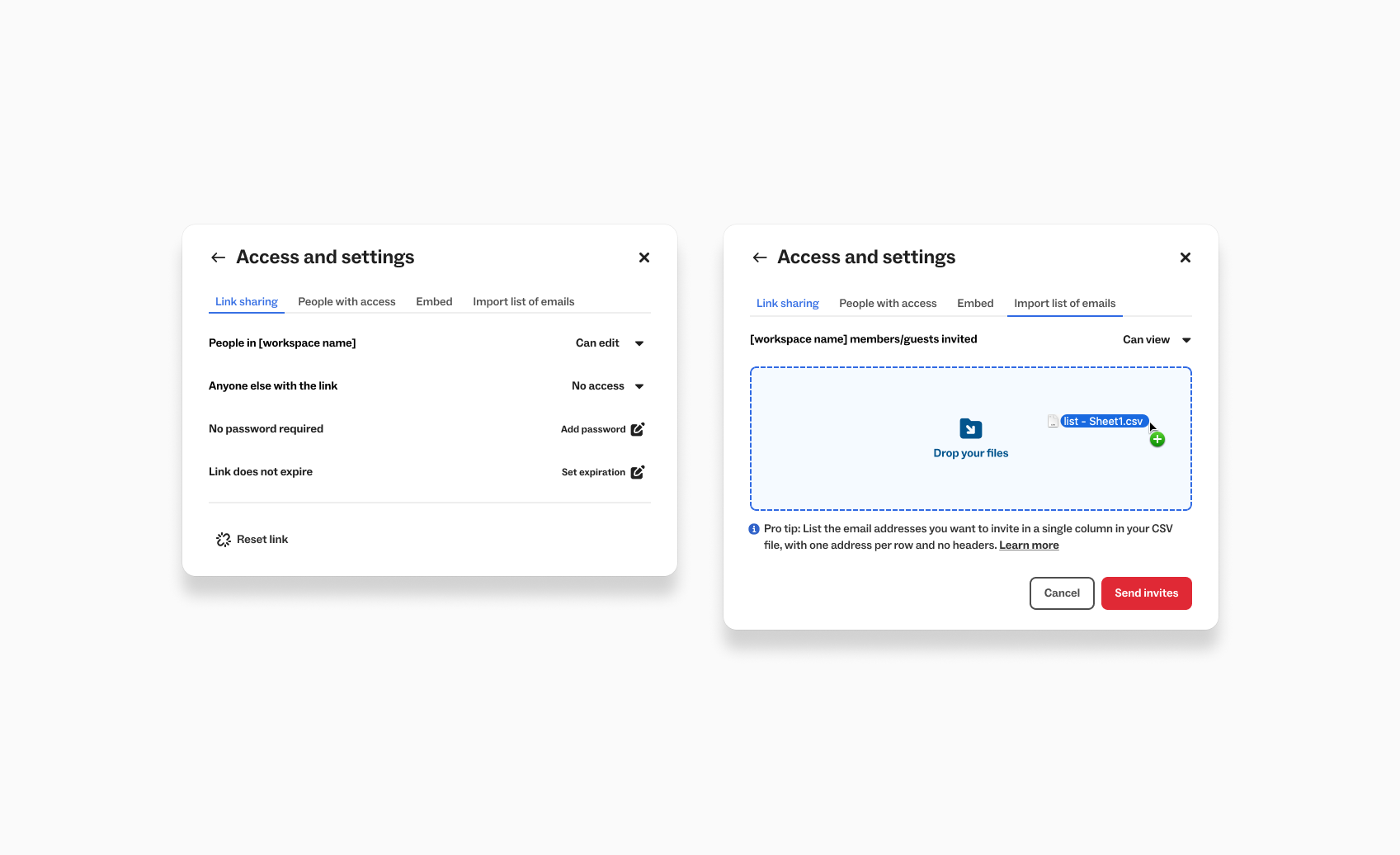
Improved architecture
With the new simplified sharing experience, we improved the information architecture by grouping advanced settings together and displaying key settings by default.

Results
The new simplified share modal underwent internal beta testing for a month before being released to 80% of Free plan users. To gauge the impact, we calculated a metric based on the task success of the share modal: the percentage of users who, after clicking the share button, proceeded to invite others to the mural.
The old share modal had a task success rate of 11% among Free users. On the first day of releasing the new modal to 80% of Free plan users, this rate increased to 29% (3X improvement).
Impact of this work
The redesign of the share modal was a complex and significant undertaking that required a comprehensive overhaul. By conducting internal sprint releases, we were able to gather continuous feedback and iterate quickly. This approach led to a successful initial improvement in the sharing experience for collaborators. However, the release also highlighted the ongoing need for adjustments due to the complexities of Enterprise sharing permissions and Mural’s new tired membership pricing model. Overall, this project marked a crucial first step in enhancing how users share murals with collaborators.